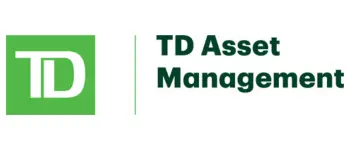Let’s Compare These High-Potential Canadian Growth ETFs
Key takeaways
Tech-Heavy Exposure – Many of the top growth ETFs focus on technology, benefiting from long-term innovation trends.
U.S. Market Dominance – ETFs tracking the S&P 500 and NASDAQ 100 provide exposure to high-growth American companies.
Diversified vs. Thematic Choices – Some ETFs focus purely on tech, while others offer broader market exposure with a growth tilt.
One ETF I like way better than the ones on this list.Exchange-traded funds (ETFs) have become super popular for Canadian investors aiming to diversify their portfolios and achieve long-term growth. Big rewards come from picking individual Canadian stocks, but there’s a catch – higher risk.
So, if you’re an investor who doesn’t have the time or ability to pick individual stocks, you may be looking to ETFs that prioritize total return to squeeze out the largest amount of money from your portfolio.
Growth ETFs are designed to give you exposure to companies with the potential for above-average revenue and earnings growth, which are often found in sectors like technology.
Identifying the best growth ETFs can depend on various factors. A fund managers definition of “growth” can vary, so the structure of these funds tends to be very different.
Let’s dig into some of the top ones today. Keep in mind that most of the ETFs below will give you exposure outside of Canada, as there is often more growth in larger economies like the United States.
If you’re looking for income over growth, I have an extensive list of some of the best Canadian dividend ETFs here.
What are the best Canadian ETFs for growth?
Canada’s top tech ETF
iShares S&P/TSX Capped Information Technology Index ETF (TSE:XIT)

XIT tracks the S&P/TSX Capped Information Technology Index, offering concentrated exposure to Canada’s biggest tech firms. It includes high-growth companies like Shopify, Constellation Software, and OpenText, making it a strong choice for investors seeking Canadian tech exposure.
Low-cost U.S. growth exposure
Vanguard S&P 500 Index ETF (TSE:VFV)

VFV tracks the S&P 500, providing Canadian investors with exposure to top U.S. companies, including Apple, Microsoft, and Amazon. It’s a simple, cost-effective way to invest in American growth stocks.
NASDAQ’s tech-driven growth potential
iShares NASDAQ 100 Index ETF (CAD-Hedged) (TSE:XQQ)

XQQ gives Canadian investors hedged exposure to the NASDAQ 100, an index packed with top technology companies, including Apple, NVIDIA, and Tesla. The ETF benefits from U.S. innovation and high-growth tech.
Global tech sector exposure
T.D. Global Technology Leaders Index ETF (TSE:TEC)

TEC focuses on leading global technology companies, offering a broader mix than XQQ by including emerging tech leaders worldwide.
Broad global equity growth
iShares Core Equity ETF Portfolio (TSE:XEQT)

XEQT is an all-equity ETF offering global stock exposure, making it ideal for long-term growth investors. It holds a mix of Canadian, U.S., and international equities.
Canadian growth stock exposure
iShares Canadian Growth ETF (TSE:XCG)

XCG focuses on high-growth Canadian companies, giving investors exposure to domestic firms with strong upside potential.
Growth ETFs aim for capital appreciation, not income
Growth ETFs, or exchange-traded funds, represent a category of investments specifically designed for investors seeking capital appreciation over time.
Unlike funds that pay a regular income, growth ETFs are weighted towards sectors and stocks that possess the potential for higher-than-average returns.
Generally, the approach with growth ETFs involves targeting companies that are expected to grow at an above-average rate compared to their industry peers. These growth stocks are often from the tech sector, but can be broadly diversified as well.
A key benefit of holding growth ETFs is the diversification they offer. Instead of purchasing individual stocks, investing in a growth ETF provides exposure to a basket of growth-oriented stocks.
This helps to spread risk across various assets and potentially mitigates the impact of volatility on your investment portfolio.
Growth ETFs differ from value ETFs, which focus on undervalued companies likely to appreciate over the long term. Growth ETFs are more about capitalizing on current and future momentum within specific companies and sectors that are scaling rapidly.
Remember that growth investing can involve more risk than other strategies. This is because the companies are often trading at much more expensive valuations. So, make sure they fit within your risk tolerance prior to purchasing.
Why most investors should aim for total return over dividends
Total return is a comprehensive measure which includes interest, dividends, and capital gains. It reflects a portfolio’s full performance. Focusing solely on dividends can be limiting, especially if you’re not yet in retirement.
Most investors should prioritize capital gains and reinvest dividends to fuel further growth. This approach might offer more significant potential for appreciation over time.
Many avoid this type of strategy out of fear they may panic and make mistakes while the market is volatile. While this is a very realistic possibility, training yourself to be able to withstand the market movements and taking a total return approach will ultimately lead to higher returns over the long term, assuming you don’t panic and make a mistake, that is.
As you approach retirement, you might consider shifting toward income-generating assets like bonds or higher-yield funds. This is because you will generally start drawing down on your accounts and will no longer be accumulating. At this point, structuring your portfolio around mitigating sequence of returns risk is often the priority.
However, for those with a 20-30 year time horizon, A 1-2% increase in annualized return can lead to hundreds of thousands of dollars in extra capital in retirement.
